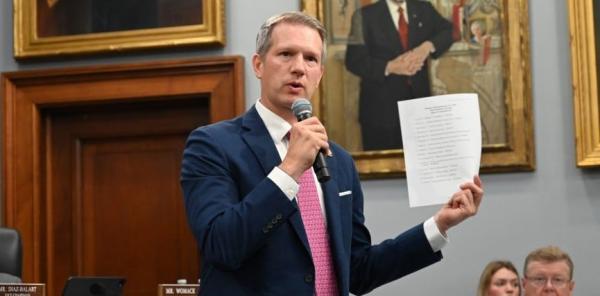
Following the approval of the National Integrated Infrastructure Master Plan (NIIMP) by the Federal Executive Council, recently about $325 billion is required to expand Nigeria’s mobile network infrastructure capacity to meet international standards.
Under the network expansion Plan, the National Planning Commission (NPC) said the broadband fibre optic network would be considered as a priority.
The amount represents about 11 per cent of the total ($3 trillion) sum required by Nigeria to attain the benchmark as contained in the master plan over the next 30 years.
The NIIMP is Nigeria’s blueprint for accelerated infrastructure development. It provides the road-map for building world class infrastructure that will enhance the quality of life of the citizenry and enable Nigeria take advantage of the vast opportunities in domestic and global economies for sustained economic growth and development.
According to NPC, the Plan takes stock of existing infrastructure and identifies the required investments to bring infrastructure in line with the country’s growth aspirations. it also established sector targets, priority programmes and critical enablers for effective implementation.
The Minister of National Planning Commission, Dr. Abubakar Sulaiman, said, the fund is part of the $3 trillion National Integrated Infrastructure Master Plan, NIIMP of the Commission, based on sectoral growth strategies, outcome targets and international benchmarks, spread over a period of 30 years.
From the Plan, Nigeria’s core infrastructure stock was estimated at only 20-25 per cent of the Gross Domestic Product (GDP) in 2013 and based on re-based GDP figures in 2014, and the country’s economic growth aspirations, it was estimated that a total investment of about $3 trillion will be required over the next 30 years to build and maintain a world class infrastructure for Nigeria.
In the preferred accelerated growth path, the NPC said Nigeria needed to increase investment in infrastructure from the current $1.1 billion annually to above 1.749 billion annually in 2014 and $5.621 billion in 2018, averaging $3.63 billion annually (5.4% GDP) for the five years period (2014-2018).
Thereafter, the Commission reasoned that the entire investment rate of infrastructure should further increase to 7.9 per cent of GDP by the period 2019-23, and remain above 7 per cent of GDP for the rest of the 30 years plan until 2043.
In the first five years of the Plan, the Commission said investments in ICT will be given priority due to its current relative level of under-investment.
From the investment, the Minister said it is expected that the investments will grow over the next five years annually and that investment in the remaining sectors will grow, but at lower growth rates, adding that investment required in ICT sector would not be less than $22 billion in the next five years.
Dr. Sulaiman, however, pointed out that increased private sector participation in the plan would require a supporting environment with stable and transparent government policies, rules and regulations, fiscal and monetary incentives, long term financing mechanisms, strengthened PPP management capacities as being done by federal government.
In addition, the NIIMP is to be structured to provide the framework for investment allocation across the six geo-political regions in the country.
The investment is said to be in accordance with socio-economic priorities of each region.
Out of the total investment requirement of about $3 trillion over the next 30 years, $166 billion will be required during 2014-18 period to fund key infrastructure.
Why NIIMP
On why the action needed the infrastructure master plan, NPC said current infrastructure stock is inadequate to support socio-economic development. It also stated that the challenges of coherence, continuity, consistency and coordination in implementation of existing infrastructure were important.
Other reasons listed by the Commission include: growing population and urbanization increase pressure on existing infrastructure as demand exceeds supply; to spur growth with medium to long term and well planned infrastructure investment guidelines; to promote economic growth, equity and poverty reduction and to foster spatial development.
Funding
The share of the public sector (federal and States) in the estimated amount is 52 per cent, while private sector accounts for the remaining 48 per cent.
According to the plan, four options were identified, as possible means of funding the public sector required investment, they include: government budgets; government debt; other government controlled sources such as the Sovereign Wealth Fund and Pension Funds in addition to Public Private Partnerships with private, PPP sector participation.
Short and medium term measures
As part of short and medium term measures required to ensure effective implementation of the NIIMP, the NIIMP outlined some immediate changes required: strengthening the legal framework to allow for private sector participation in infrastructure development; creating an infrastructure delivery Coordinating Unit within the NPC; ensuring financing for priority projects and launching of a broad communication strategy to reach all stakeholders.
Medium Term changes
The plan reasoned that optimization of the end-to-end infrastructure governance model; promotion of private sector alignment and support and development of large scale training programmes to bridge the capacity gaps in building, maintaining and operating the NIIMP infrastructure, as well as strengthening engineering infrastructure.
In the same vein, the States are expected to develop State Integrated Infrastructure Master Plans (SIIMPs) based on their priorities in line with the NIIMP.
NPC said, strict implementation of the NIIMP would be a redefining moment for the fortunes of the nation’s ICT sector and repositioning herself worth as a nation.
It also explained that the integrated approach was adopted by the present administration as an inclusive approach to infrastructure delivery, as practised in some other industrialized nations, to systematically facilitate and promote economic growth and development.
The NIIMP was on 3 September, 2014 approved by the Federal Executive Council as a 30 year plan after the presentation of the draft by President Goodluck Jonathan on 21 November, 2012.






















